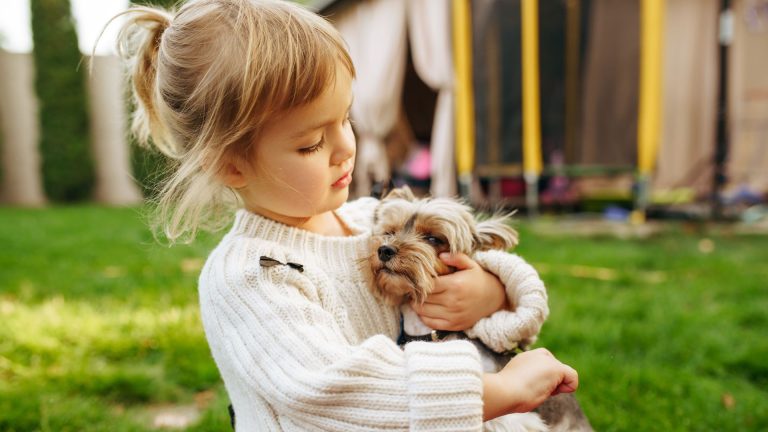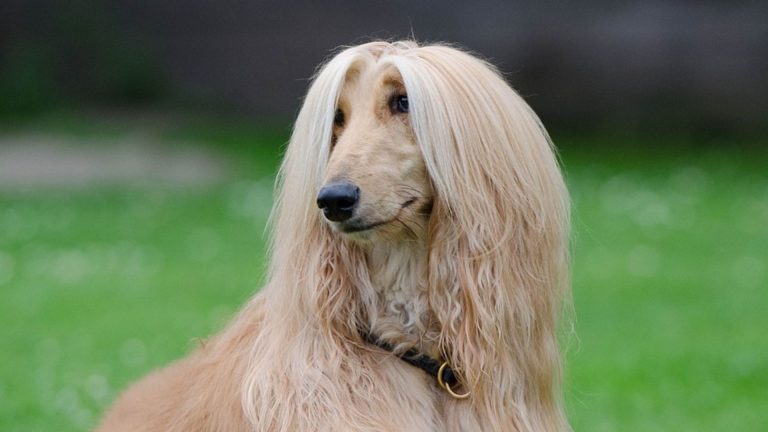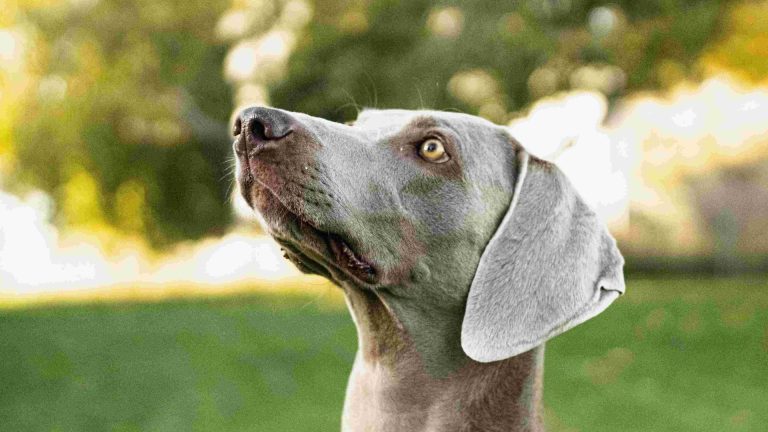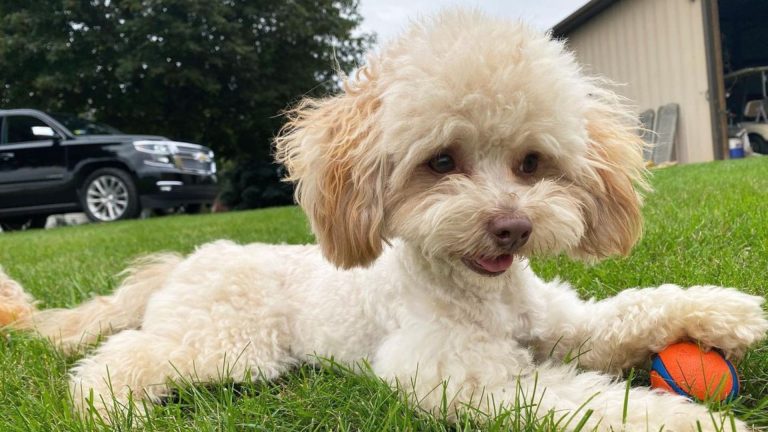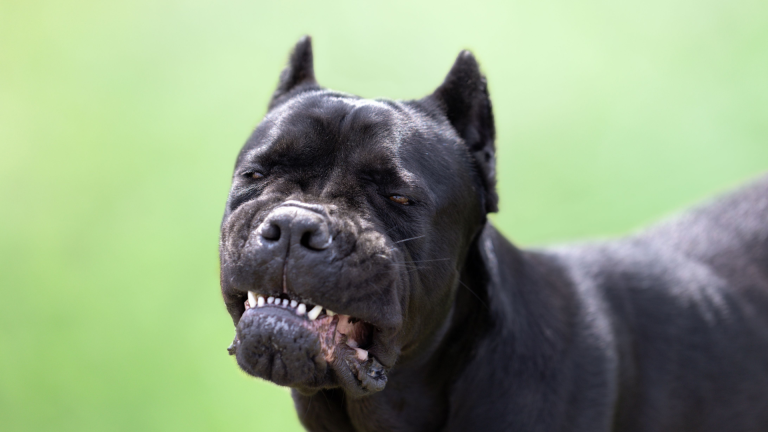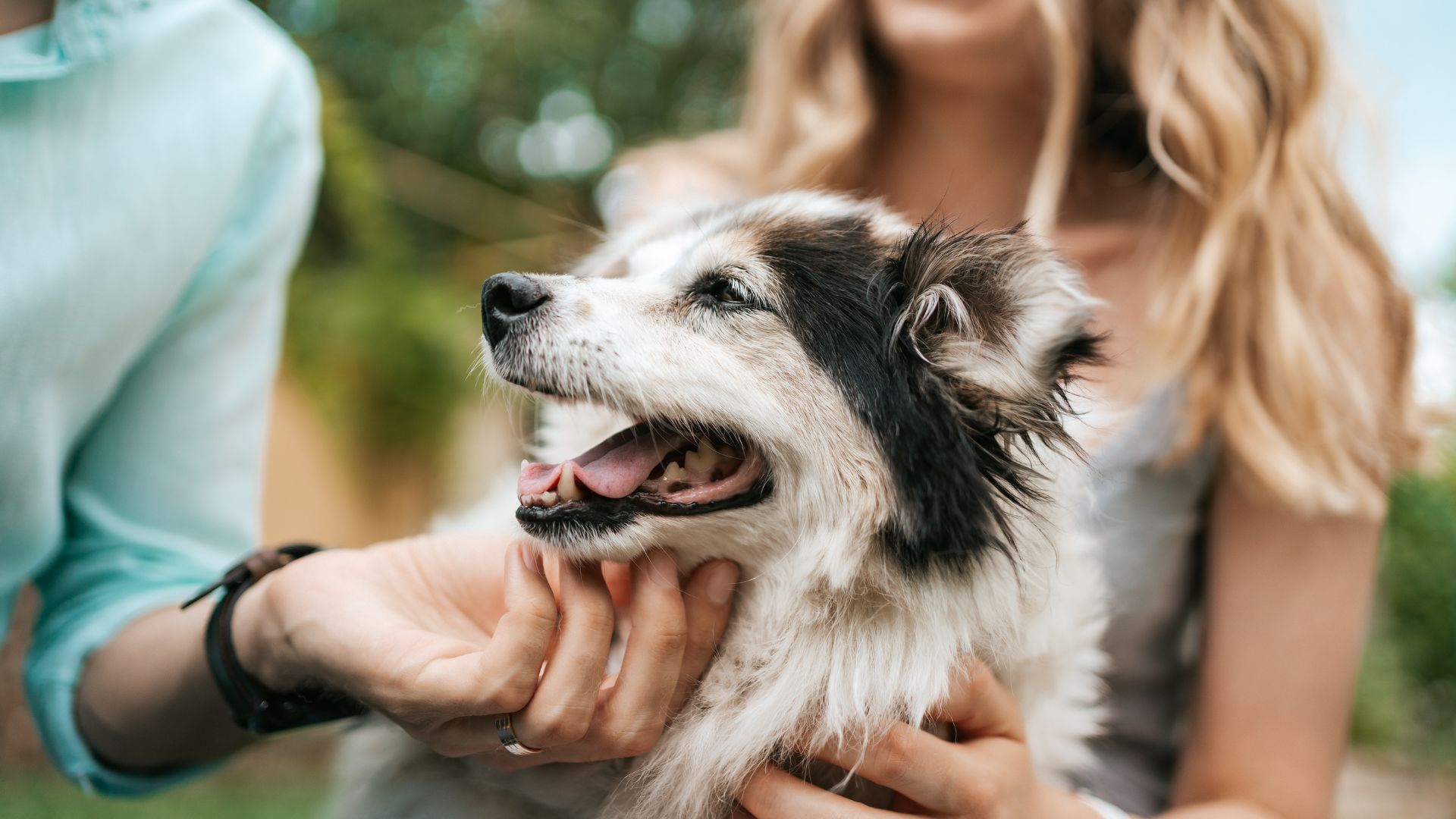
Contents
- 1 Benefits of Gray Dog Breeds
- 2 Top 10 Gray Dog Breeds
- 3 Choosing the Right Gray Dog Breed for You
- 4 Caring for Your Gray Dog
- 5 Conclusion
Gray dog breeds are known for their unique beauty and striking appearance. These dogs often captivate with their sleek, silver coats. Choosing the right breed is crucial for a happy pet-owner relationship. Each breed has distinct traits, temperaments, and care needs. This article will explore the top 10 gray dog breeds, highlighting their histories, characteristics, and care requirements. You’ll discover the best gray canine companions, whether you seek a playful friend or a gentle giant. Dive in to find the perfect gray dog breed for your lifestyle.
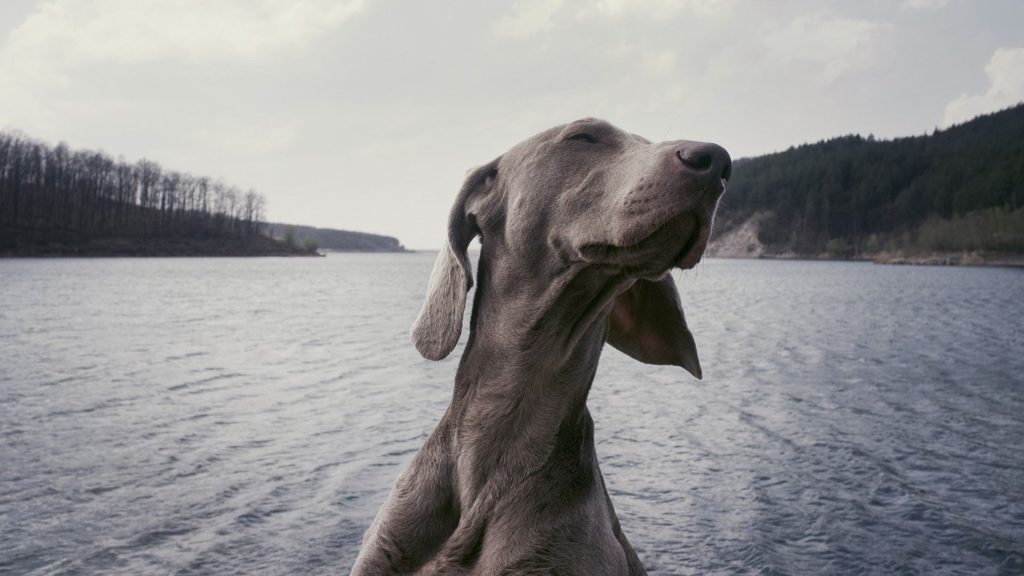
Benefits of Gray Dog Breeds
Gray dog breeds offer a unique aesthetic appeal. Their sleek, silver coats stand out in any setting, often exuding an air of elegance and sophistication. These dogs frequently catch the eye, making them popular in both casual walks and formal events.
In addition to their beauty, gray dogs possess diverse temperaments and behavior traits. Many gray breeds are known for their loyalty and intelligence. They often exhibit friendly and calm dispositions, making them excellent companions for families and individuals alike. Their behavior can range from energetic and playful to gentle and reserved, catering to various lifestyle needs.
Gray dog breeds also enjoy significant popularity among dog owners. Their striking appearance, combined with their desirable personality traits, makes them a top choice for many. Owners often find that gray dogs attract positive attention and compliments, enhancing the joy of pet ownership. Furthermore, the diverse range of gray breeds means there’s a perfect match for every potential owner, regardless of their living situation or activity level.
In summary, gray dog breeds offer a combination of beauty, versatility, and favorable temperaments, making them highly sought after by dog enthusiasts. Their unique appeal and adaptable nature ensure they remain popular choices among pet owners.
Top 10 Gray Dog Breeds
In this section, we will delve into the top 10 gray dog breeds, exploring their unique characteristics, histories, and care needs. Each breed offers something special, ensuring you find the perfect gray canine companion for your lifestyle.
Breed #1: Weimaraner
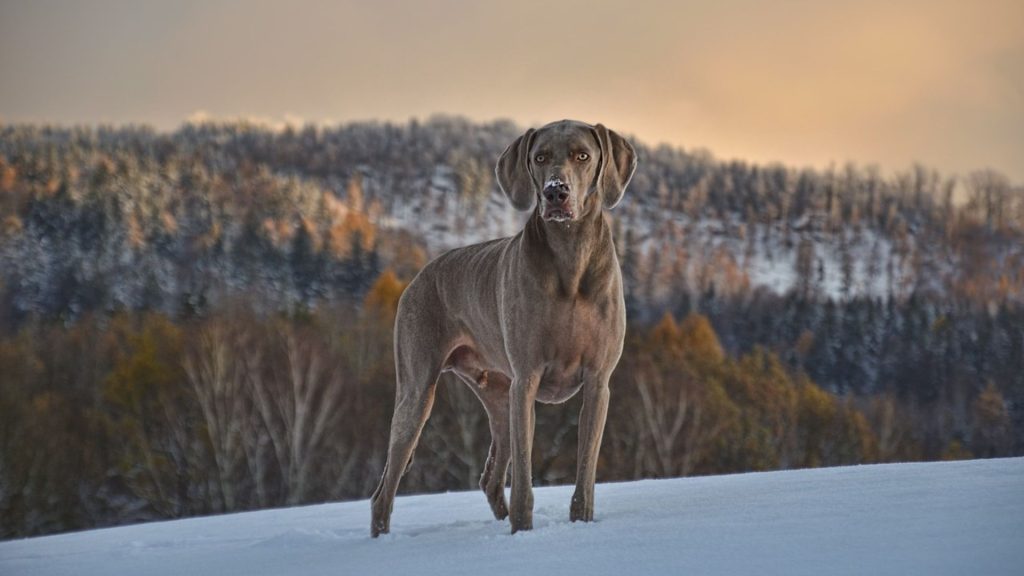
The Weimaraner, often called the “Gray Ghost,” originated in Germany in the early 19th century. Nobles bred them for hunting large game like boar, deer, and bears. Their name comes from the Grand Duke of Weimar, who played a significant role in developing the breed.
Physical Characteristics
Weimaraners are medium to large dogs with sleek, silver-gray coats. They have long ears, expressive amber or blue-gray eyes, and a lean, muscular build. Adult males typically weigh between 70-90 pounds, while females range from 55-75 pounds.
Personality and Behavior
Weimaraners are known for their high energy levels and intelligence. They are loyal, affectionate, and often form strong bonds with their families. These dogs are also curious and enjoy being involved in all family activities. They require plenty of mental and physical stimulation to prevent boredom and destructive behavior.
Care and Grooming
Weimaraners have short, smooth coats that are easy to maintain. Regular brushing helps reduce shedding and keeps their coat healthy. These dogs are prone to certain health issues like hip dysplasia and bloat, so regular vet check-ups are essential. They also need daily exercise to burn off their energy and keep them fit.
Ideal Living Conditions
Weimaraners thrive in active households where they have plenty of space to run and play. They are best suited for homes with large yards or access to open spaces. These dogs do not do well in apartments or confined spaces due to their high energy levels. They also need a family that can provide them with ample attention and training.
Breed #2: Greyhound
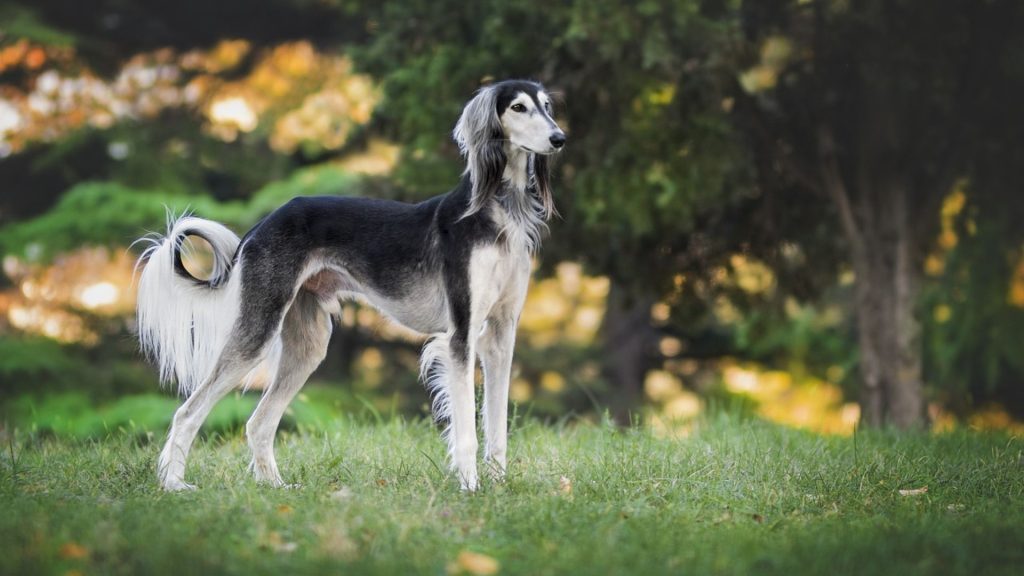
The Greyhound is an ancient breed with a history that dates back over 4,000 years to ancient Egypt. They were revered by pharaohs and depicted in many Egyptian artifacts. Later, they became popular in Europe for their speed and hunting abilities, especially in coursing and racing.
Physical Characteristics
Greyhounds are tall, slender dogs with an aerodynamic build. They have long legs, a deep chest, and a narrow waist. Their coats are short and smooth, coming in a variety of colors, including gray. Adult males typically weigh between 65-70 pounds, while females range from 60-65 pounds.
Personality and Behavior
Greyhounds are gentle, affectionate, and calm dogs. Despite their racing background, they are known as “couch potatoes” due to their love for lounging around the house. They are friendly with people and other dogs but can be reserved with strangers. Greyhounds have a strong prey drive and may chase smaller animals, so early socialization is crucial.
Care and Grooming
Greyhounds have minimal grooming needs due to their short coats. Regular brushing keeps their coat clean and reduces shedding. They are prone to dental issues, so routine dental care is important. Greyhounds require regular exercise but are content with short bursts of activity followed by long periods of rest.
Ideal Living Conditions
Greyhounds adapt well to both city and suburban living, provided they have a comfortable space to rest. They need a secure, fenced area where they can run safely. They are sensitive to extreme temperatures due to their thin skin and low body fat, so they need protection from the cold and heat. Greyhounds thrive in homes where they receive plenty of love and companionship.
Breed #3: Siberian Husky
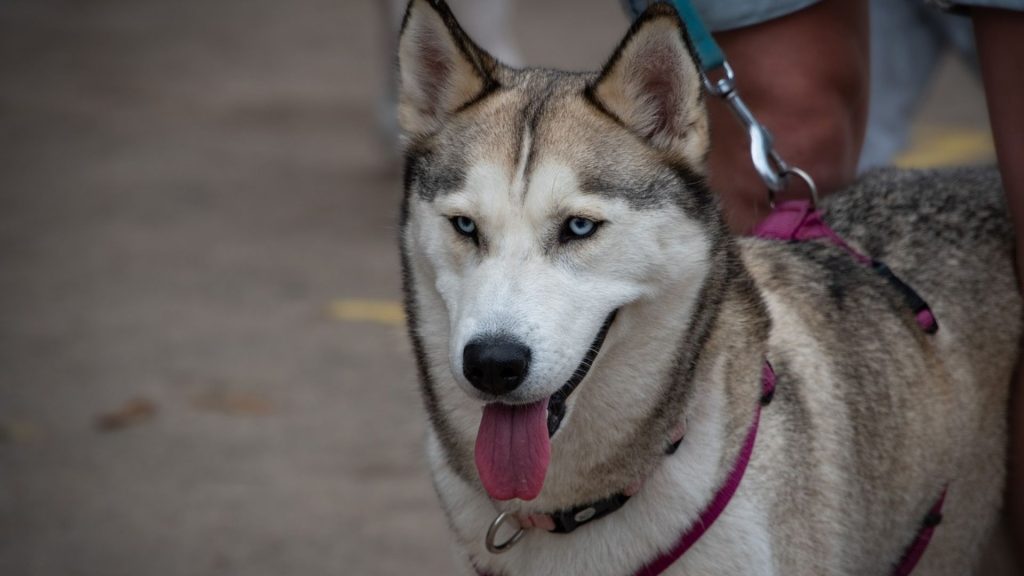
The Siberian Husky originated in northeastern Asia, where the Chukchi people bred them as sled dogs. They were essential for transportation and hauling goods across vast snowy landscapes. In the early 20th century, Siberian Huskies gained fame in Alaska for their role in sled dog racing and expeditions.
Physical Characteristics
Siberian Huskies are medium-sized dogs with a strong, muscular build. They have a thick double coat that provides insulation against cold weather. Their striking blue or multicolored eyes and distinctive facial markings make them easily recognizable. Adult males typically weigh between 45-60 pounds, while females range from 35-50 pounds.
Personality and Behavior
Siberian Huskies are known for their friendly, outgoing, and energetic nature. They are highly social and enjoy being around people and other dogs. Huskies are intelligent and independent, often displaying a mischievous streak. They require consistent training and mental stimulation to keep them engaged and well-behaved.
Care and Grooming
Siberian Huskies have high grooming needs due to their dense double coat. Regular brushing, especially during shedding seasons, is essential to manage their fur. They are generally clean dogs with minimal odor but may require occasional baths. Huskies are prone to certain health issues, such as hip dysplasia and eye conditions, so regular veterinary check-ups are important. They need ample exercise to burn off their energy and maintain their physical health.
Ideal Living Conditions
Siberian Huskies thrive in colder climates due to their thick coats. They require plenty of space to run and play, making them well-suited for homes with large yards or access to open areas. Huskies do not do well in hot, humid environments and need protection from the heat. They are best suited for active families who can provide them with the physical activity and mental stimulation they need.
Breed #4: Irish Wolfhound
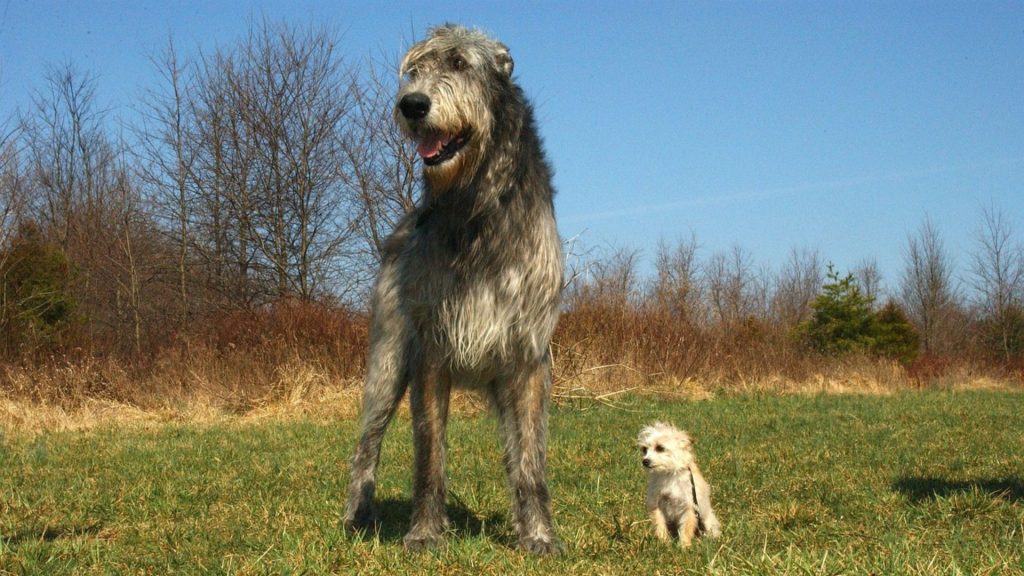
The Irish Wolfhound is an ancient breed, with origins dating back to ancient Ireland over 2,000 years ago. They were originally bred by the Celts for hunting large game such as wolves and elk. These dogs became renowned for their size, strength, and hunting prowess.
Physical Characteristics
Irish Wolfhounds are among the tallest dog breeds, with a commanding and robust appearance. They have a rough, wiry coat that can come in various colors, including gray. Their long legs, deep chest, and sturdy build contribute to their impressive stature. Adult males typically stand at least 32 inches tall and weigh between 140-180 pounds, while females are slightly smaller.
Personality and Behavior
Irish Wolfhounds are gentle giants, known for their calm and friendly nature. Despite their imposing size, they are incredibly affectionate and form strong bonds with their families. They are patient, good-natured, and excellent with children. These dogs are relatively laid-back but still enjoy regular exercise and playtime.
Care and Grooming
Irish Wolfhounds have moderate grooming needs. Their wiry coats require regular brushing to prevent matting and maintain a healthy appearance. Due to their size, they are prone to certain health issues like hip dysplasia and heart problems, so regular veterinary care is crucial. They need moderate exercise to keep them fit, but they also appreciate lounging around the house.
Ideal Living Conditions
Irish Wolfhounds thrive in homes with ample space to accommodate their large size. They are best suited for houses with large yards where they can roam freely. Due to their calm demeanor, they adapt well to a variety of living situations, but they need a comfortable environment to rest. They are not well-suited for apartment living or confined spaces. Irish Wolfhounds require a loving family that can provide them with the care and attention they need.
Breed #5: Norwegian Elkhound
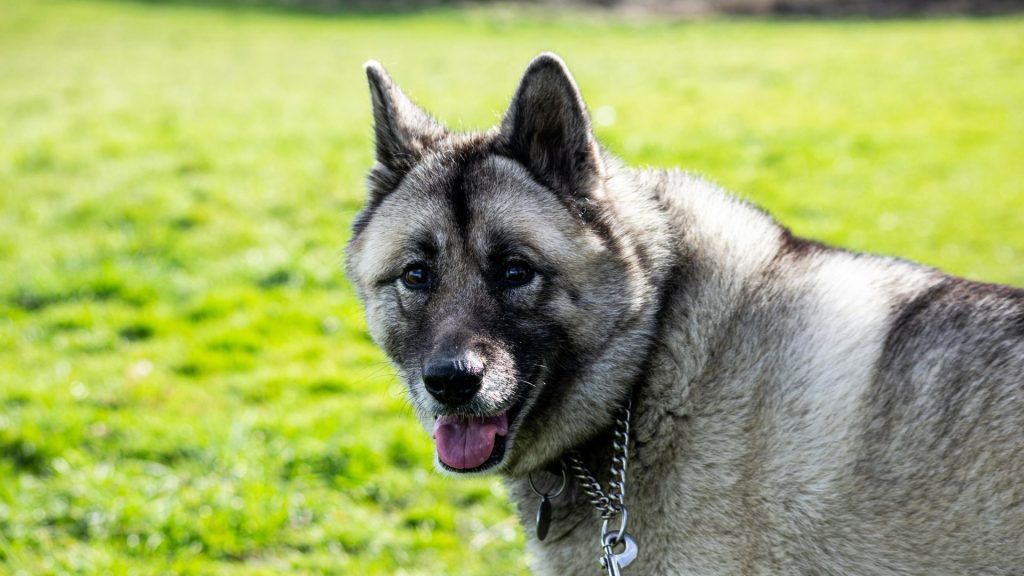
The Norwegian Elkhound is an ancient breed with roots tracing back to Norway over a thousand years ago. They were originally bred by the Vikings for hunting elk, bear, and other large game. This breed has a long history of serving as a reliable hunting and guard dog.
Physical Characteristics
Norwegian Elkhounds are medium-sized dogs with a sturdy and robust build. They have a dense, double coat that is typically gray, providing excellent insulation against cold weather. Their erect ears, curled tail, and expressive eyes give them a distinctive and alert appearance. Adult males typically weigh between 50-60 pounds, while females range from 40-55 pounds.
Personality and Behavior
Norwegian Elkhounds are known for their friendly, bold, and independent nature. They are loyal and protective of their families, making them excellent watchdogs. Elkhounds are energetic and playful, enjoying outdoor activities and exercise. They are intelligent and can be stubborn, requiring consistent training and mental stimulation.
Care and Grooming
Norwegian Elkhounds have high grooming needs due to their thick double coat. Regular brushing is essential to manage shedding and maintain their coat’s health. They are generally clean dogs with minimal odor but may require occasional baths. Elkhounds are prone to certain health issues like hip dysplasia and progressive retinal atrophy, so regular veterinary check-ups are important. They need regular exercise to keep them physically and mentally fit.
Ideal Living Conditions
Norwegian Elkhounds thrive in cooler climates due to their dense coats. They are best suited for homes with large yards where they can roam and explore. These dogs need plenty of outdoor activity and enjoy participating in hiking, running, and other physical activities. They are not ideal for apartment living due to their energy levels and need for space. Norwegian Elkhounds require a family that can provide them with ample exercise, training, and affection.
Breed #6: Keeshond
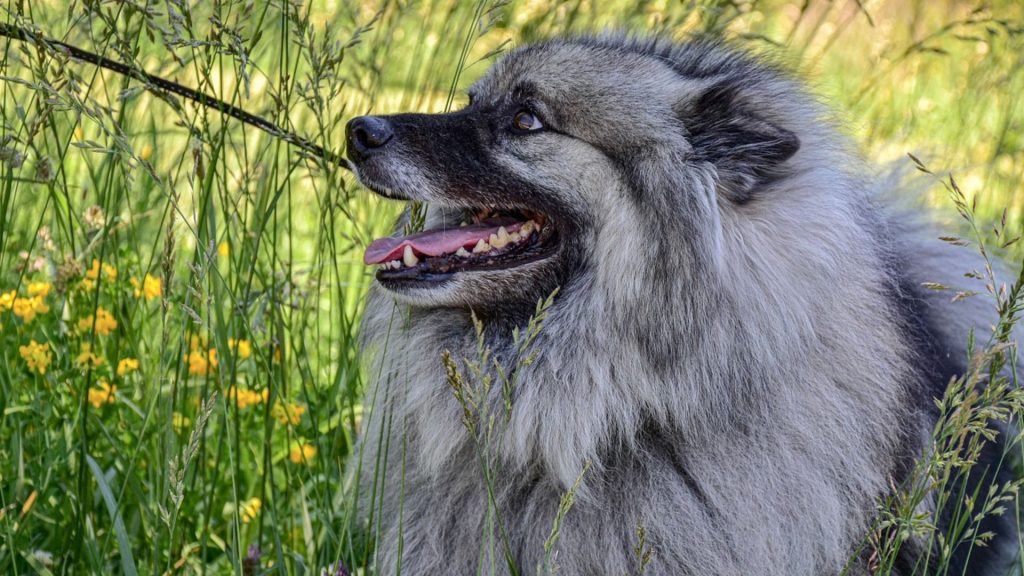
The Keeshond, often known as the “Dutch Barge Dog,” has origins dating back to the 18th century in the Netherlands. They were popular as watchdogs on riverboats and barges, where they served as loyal companions and alert guardians. The breed was named after Cornelis (Kees) de Gyselaer, a Dutch patriot who used the dog as a symbol during political upheaval.
Physical Characteristics
Keeshonds are medium-sized dogs with a distinctive, plush double coat that is predominantly gray with black tips. They have a fox-like face, erect ears, and a mane of fur around their necks, giving them a lion-like appearance. Their expressive eyes and bushy tails that curl over their backs add to their charming look. Adult males typically weigh between 35-45 pounds, while females range from 30-40 pounds.
Personality and Behavior
Keeshonds are known for their friendly, affectionate, and outgoing personalities. They are highly social dogs that thrive on human companionship and get along well with children and other pets. Keeshonds are intelligent and eager to please, making them relatively easy to train. They are alert and vocal, often serving as excellent watchdogs, but their bark is usually more of a greeting than a warning.
Care and Grooming
Keeshonds have moderate grooming needs due to their thick double coat. Regular brushing is essential to prevent matting and reduce shedding. During shedding seasons, more frequent brushing is required to manage their dense fur. They are generally clean dogs with minimal odor, but occasional baths help keep their coat in top condition. Keeshonds are prone to certain health issues such as hip dysplasia and heart disease, so regular veterinary check-ups are important. They need daily exercise to stay healthy and happy, including walks and playtime.
Ideal Living Conditions
Keeshonds adapt well to various living conditions, including both apartments and houses, as long as they get enough exercise and mental stimulation. They do well in temperate climates, but their thick coat can make them uncomfortable in extreme heat, so they need to be kept cool in hot weather. Keeshonds are happiest when they are part of family activities and have plenty of interaction with their human companions. They require a loving and attentive family that can provide them with the care, exercise, and affection they need.
Breed #7: Great Dane
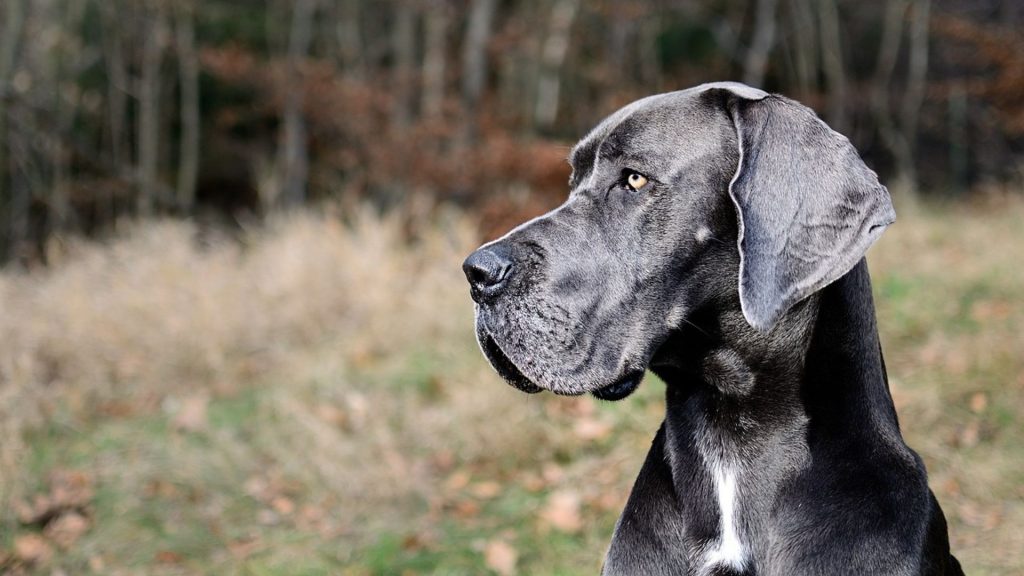
The Great Dane, also known as the “Apollo of dogs,” originated in Germany over 400 years ago. Bred initially for hunting wild boar and protecting estates, they combined strength and size with elegance. Their ancestry includes Mastiff-like dogs brought to Europe by ancient travelers.
Physical Characteristics
Great Danes are giant dogs with a powerful and elegant build. They have a short, smooth coat that can come in various colors, including gray (often referred to as “blue”). Their long legs, deep chest, and massive head give them a regal appearance. Adult males typically stand 30-34 inches tall and weigh between 140-175 pounds, while females are slightly smaller, standing 28-32 inches tall and weighing between 110-140 pounds.
Personality and Behavior
Great Danes are known for their gentle and friendly nature. Despite their size, they are often referred to as “gentle giants.” They are affectionate, loyal, and good with children, making them excellent family pets. Great Danes are usually calm and composed but require early socialization and training to ensure they are well-behaved. They have moderate energy levels and enjoy regular walks and playtime.
Care and Grooming
Great Danes have low grooming needs due to their short coat. Regular brushing helps to keep their coat healthy and reduces shedding. They are prone to certain health issues, such as hip dysplasia, bloat, and heart conditions, so regular veterinary care is essential. Due to their large size, they require a balanced diet to maintain a healthy weight and avoid joint problems. Great Danes need daily exercise but are generally not as active as smaller breeds.
Ideal Living Conditions
Great Danes can adapt to various living conditions, including apartments, provided they receive enough exercise and attention. However, they thrive best in homes with ample space to accommodate their size. They need a comfortable resting area with enough room to stretch out. Great Danes are sensitive to extreme temperatures, so they require a climate-controlled environment. They are happiest when they are part of the family and receive plenty of love and companionship.
Breed #8: Poodle (Standard and Miniature)
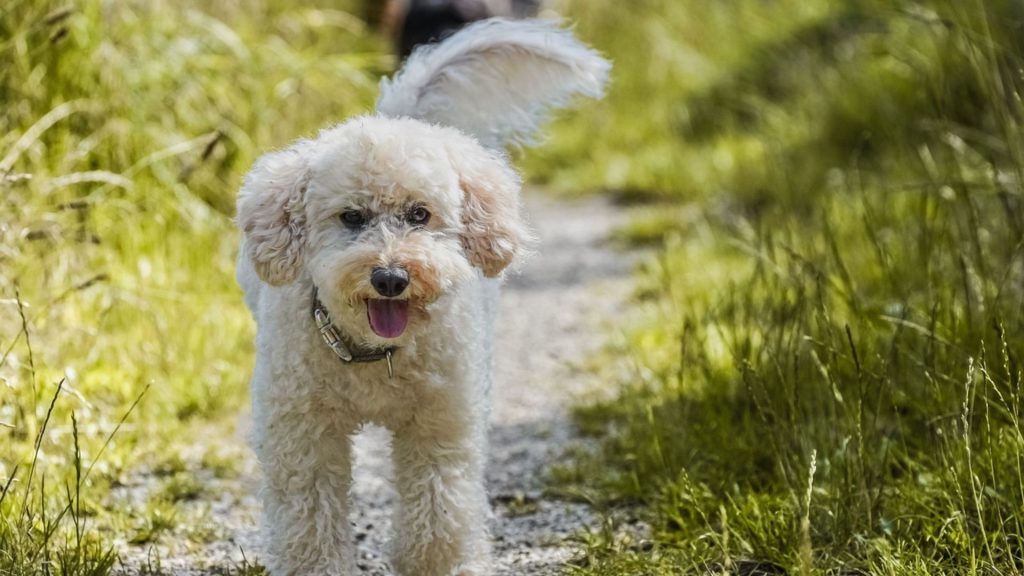
The Poodle is a highly versatile breed with a rich history that dates back over 400 years, primarily originating in Germany and standardized in France. Initially bred for water retrieving, Poodles became popular among European nobility and circuses due to their intelligence and trainability. The breed comes in three sizes: Standard, Miniature, and Toy, with the Standard being the oldest.
Physical Characteristics
Poodles are known for their distinctive curly coats and elegant appearance. Standard Poodles typically weigh between 45-70 pounds and stand over 15 inches tall at the shoulder. Miniature Poodles weigh between 10-15 pounds and stand 10-15 inches tall. They have a square build, long neck, and a proud, graceful demeanor. Their coats can come in various colors, including gray.
Personality and Behavior
Poodles are intelligent, active, and highly trainable dogs. They are known for their friendly and sociable nature, making them excellent family pets. Poodles enjoy being the center of attention and thrive on mental and physical stimulation. They are eager to please and excel in obedience training and various dog sports. Poodles are generally good with children and other pets, although they may be reserved around strangers initially.
Care and Grooming
Poodles have high grooming needs due to their curly, non-shedding coats. Regular brushing is essential to prevent matting, and professional grooming every 4-6 weeks is recommended to maintain their coat’s condition. Poodles are prone to certain health issues, such as hip dysplasia, progressive retinal atrophy, and various skin conditions, so regular veterinary check-ups are important. They require daily exercise to keep them physically and mentally fit, including walks, playtime, and training sessions.
Ideal Living Conditions
Poodles adapt well to various living conditions, including apartments, as long as they receive sufficient exercise and mental stimulation. They thrive in environments where they are part of the family and involved in daily activities. Poodles are sensitive to extreme temperatures and prefer a climate-controlled environment. They do best in homes where they receive plenty of attention, love, and opportunities to engage in physical and mental activities.
Breed #9: American Pit Bull Terrier
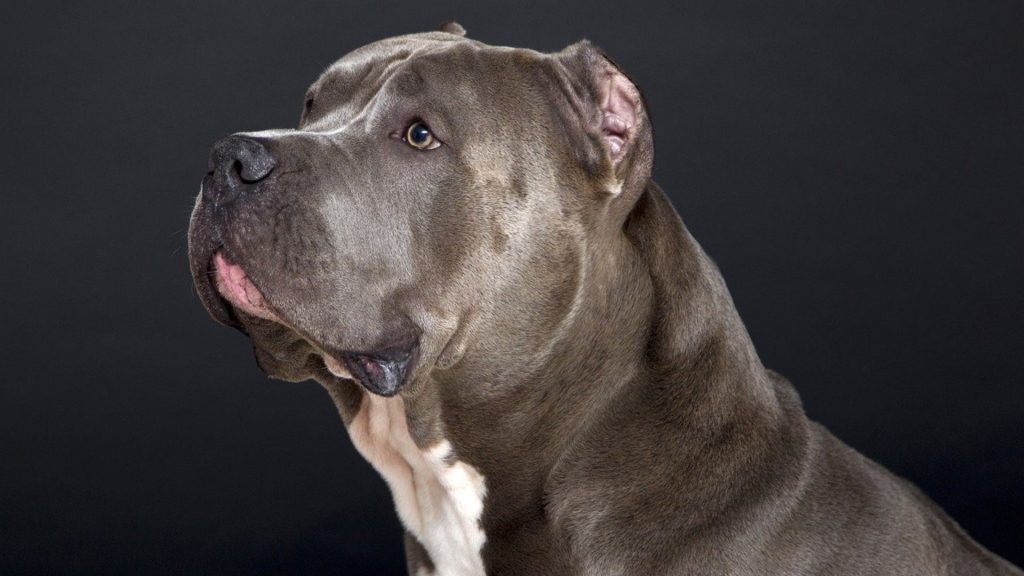
The American Pit Bull Terrier originated in the United States in the 19th century, developed from crossing bulldogs and terriers. Initially bred for bull-baiting and later as farm dogs, they became known for their strength, courage, and loyalty. Over time, they evolved into versatile working and companion dogs.
Physical Characteristics
American Pit Bull Terriers are medium-sized, muscular dogs with a strong, athletic build. They have a short, smooth coat that can come in a variety of colors, including gray. Their broad heads, strong jaws, and expressive eyes give them a distinctive and confident appearance. Adult males typically weigh between 35-60 pounds, while females range from 30-50 pounds.
Personality and Behavior
American Pit Bull Terriers are known for their affectionate, loyal, and energetic nature. They form strong bonds with their families and are particularly good with children. Despite misconceptions, they are generally friendly and social dogs when properly trained and socialized. Pit Bulls are intelligent and eager to please, making them highly trainable. They require consistent training and socialization to channel their energy and prevent behavioral issues.
Care and Grooming
American Pit Bull Terriers have low grooming needs due to their short coat. Regular brushing helps to keep their coat healthy and reduces shedding. They are prone to certain health issues, such as hip dysplasia, allergies, and skin conditions, so regular veterinary care is essential. Pit Bulls need regular exercise to maintain their physical and mental health, including daily walks, playtime, and interactive activities.
Ideal Living Conditions
American Pit Bull Terriers adapt well to various living conditions, including apartments, provided they receive sufficient exercise and mental stimulation. They thrive in active households where they can be part of family activities. Pit Bulls need a secure, fenced area to play safely and benefit from obedience training and socialization. They are happiest when they receive plenty of attention, love, and engagement from their families.
Breed #10: Italian Greyhoun
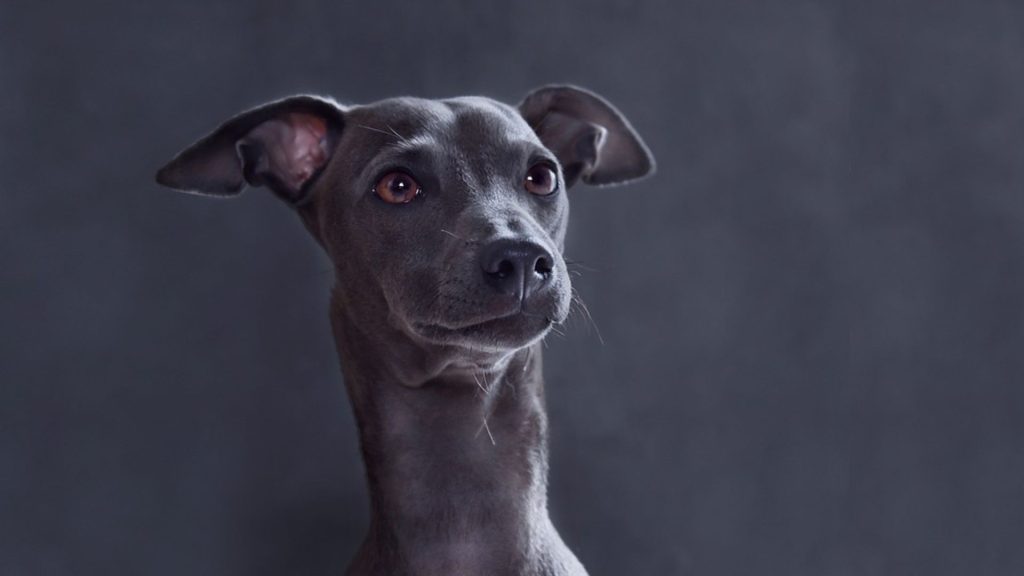
The Italian Greyhound is an ancient breed that dates back over 2,000 years, originating in the Mediterranean region. They were beloved companions of nobility and aristocrats in Italy during the Renaissance. Their elegant appearance and affectionate nature made them popular pets among royalty and artists.
Physical Characteristics
Italian Greyhounds are small, slender dogs with a graceful and delicate build. They have a short, smooth coat that can come in various colors, including gray. Their long legs, narrow body, and pointed muzzle give them a distinctive, elegant look. Adult Italian Greyhounds typically weigh between 7-14 pounds and stand about 13-15 inches tall.
Personality and Behavior
Italian Greyhounds are known for their affectionate, playful, and gentle nature. They form strong bonds with their families and enjoy being close to their owners. These dogs are intelligent and sensitive, often displaying a lively and spirited personality. They are generally good with children and other pets but can be reserved with strangers. Italian Greyhounds require gentle handling and positive reinforcement training.
Care and Grooming
Italian Greyhounds have low grooming needs due to their short coat. Regular brushing helps to keep their coat healthy and reduces shedding. They are prone to certain health issues, such as dental problems, patellar luxation, and leg fractures, so regular veterinary care is crucial. These dogs need regular exercise to maintain their physical and mental health, including daily walks and playtime. However, they should be monitored during exercise to prevent injury due to their delicate build.
Ideal Living Conditions
Italian Greyhounds adapt well to various living conditions, including apartments, as long as they receive enough exercise and attention. They thrive in environments where they can be close to their owners and involved in family activities. These dogs are sensitive to cold temperatures and may require extra warmth in cooler climates. Italian Greyhounds are happiest when they receive plenty of love, attention, and gentle care from their families.
Choosing the Right Gray Dog Breed for You
Choosing the right gray dog breed involves considering several important factors. First, think about the size of the dog. Larger breeds like the Great Dane and Irish Wolfhound require more space and may not be suitable for apartment living. In contrast, smaller breeds like the Italian Greyhound and Miniature Poodle adapt well to smaller living spaces.
Next, consider the activity level of the breed. Energetic breeds like the Siberian Husky and Weimaraner need plenty of exercise and mental stimulation. They are ideal for active owners who enjoy outdoor activities. On the other hand, breeds like the Greyhound and Keeshond are more adaptable and can be content with moderate exercise.
Grooming needs also play a crucial role. Breeds with high grooming requirements, such as the Poodle, need regular maintenance to keep their coats healthy. Conversely, breeds like the American Pit Bull Terrier and Italian Greyhound have low grooming needs.
Matching breed characteristics with your lifestyle is essential. Consider your activity level, available space, and time for grooming and training. Research each breed’s temperament to ensure a good fit with your family and lifestyle.
Finally, decide whether to adopt or buy from breeders. Adoption is a great option to give a dog a second chance and often involves lower costs. Buying from reputable breeders ensures you get a dog with known lineage and health history. Evaluate your options carefully to make the best choice for you and your new gray canine companion.
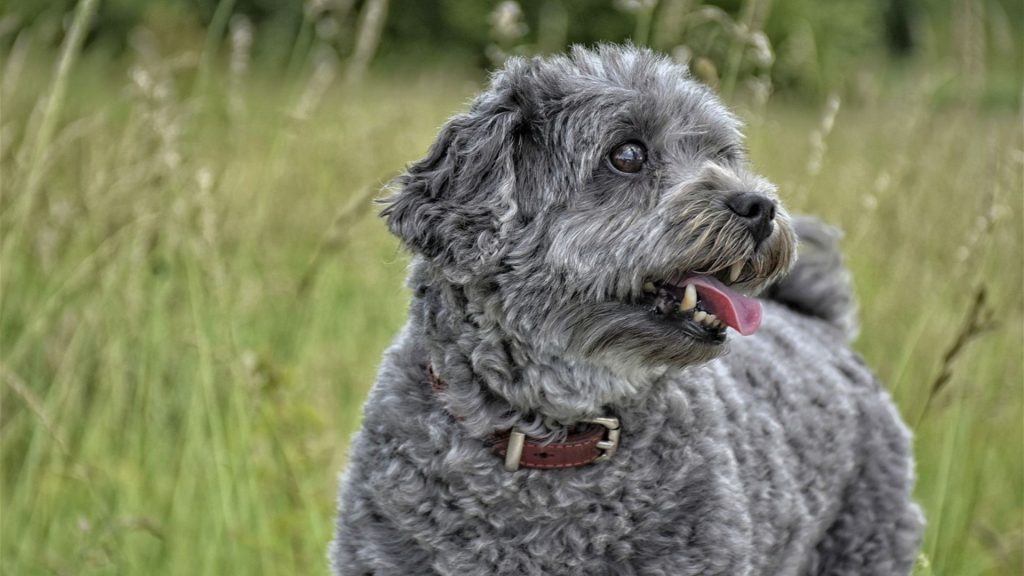
Caring for Your Gray Dog
Caring for your gray dog involves several key aspects. A balanced diet is crucial for their health and well-being. Choose high-quality dog food that meets their nutritional needs based on their age, size, and activity level. Regular exercise is also essential. Ensure your dog gets daily walks, playtime, and mental stimulation to keep them fit and happy. Regular health check-ups with a veterinarian help to catch any potential issues early and keep your dog up to date on vaccinations and preventative care.
Specific Grooming Needs for Gray Coats
Gray-coated dogs often have unique grooming needs to keep their coats looking their best. Regular brushing helps to remove loose fur and prevent matting, especially for breeds with dense or long coats like the Keeshond and Poodle. Bathing should be done as needed, using a gentle dog shampoo that doesn’t strip natural oils. Pay attention to areas that might show dirt or stains more easily, such as around the face and paws.
Importance of Socialization and Training
Socialization and training are vital for a well-behaved and happy dog. Start socializing your gray dog early, exposing them to different environments, people, and other animals. This helps reduce anxiety and build confidence. Consistent, positive reinforcement training ensures they learn good manners and basic commands. Training sessions also provide mental stimulation, which is especially important for intelligent breeds like the Siberian Husky and Weimaraner. Socialization and training create a strong bond between you and your dog, making for a harmonious and enjoyable companionship.
Conclusion
Gray dog breeds are not only visually stunning but also offer a range of personalities and characteristics that make them excellent companions. From the loyal Weimaraner and gentle giant Great Dane to the intelligent Poodle and spirited Siberian Husky, there is a gray dog breed to suit every lifestyle and preference. Each breed brings its own unique charm and benefits, ensuring you find a perfect match for your home.
Choosing a gray dog breed means welcoming a beautiful, affectionate, and often highly trainable pet into your life. These dogs can be great family members, loyal protectors, or playful friends, depending on your needs. They often attract admiration and compliments, making every outing with them special.
If you are considering adding a dog to your family, think about the gray breeds highlighted in this article. Their distinctive coats and engaging personalities make them stand out. Research thoroughly, consider your living situation, and think about your activity level and grooming commitment.
Final thoughts: A gray dog can bring joy, companionship, and a touch of elegance to your life. Take the time to find the right breed that fits your lifestyle. Whether you adopt or buy from a reputable breeder, your new gray canine companion will surely enrich your life in countless ways. Explore the possibilities and make a well-informed decision, ensuring a happy and fulfilling relationship with your future furry friend.

Hello, I’m Donna Carter, the founder and writer behind PetFleck.com. My journey with dogs started years ago, and it’s been a passion that has only grown stronger over time. I’ve always been fascinated by the unique behaviors and characteristics of different dog breeds, and this curiosity has led me to dive deep into the world of canine studies.
My love for dogs is the driving force behind everything I do. I’ve dedicated countless hours to researching and understanding the nuances of dog care, training, and breed-specific traits. This dedication helps me create content that is not only informative but also genuinely helpful for fellow dog lovers and owners.
At PetFleck, I combine my extensive knowledge and hands-on experience with my passion for dogs to provide valuable insights and tips. Whether it’s exploring different breeds or offering practical advice on dog care, I aim to share knowledge that makes a real difference in the lives of dogs and their families.
I’m thrilled to share my love for dogs with you through my writing. I hope my articles inspire and inform, helping you to better understand and appreciate the incredible bond we share with our furry friends.
Thank you for visiting PetFleck.com, and I look forward to connecting with you through our shared love of dogs!

